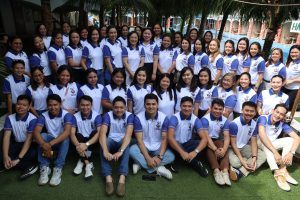The year 2 of the Annual Visayas Cluster Meeting of the Supplementary Feeding Program was hosted by the Department of Social Welfare and Development (DSWD) in Central Visayas in Panglao, Bohol, on August 28-30, 2024.

It brings together the SFP implementers, which include nutritionist dietitians, project development officers, administrative staff, and focal persons, to convene and discuss the program implementation in the three Visayas regions 6, 7, and 8.
This year’s theme, “Kamustahan sa Visayas: Looking into the Aperture of SFP,” looks into the current state of the program, provides guidance to the staff, and shares best practices to improve regional operations of SFP, especially as the cluster prepares for the launch of a new administrative region, the Negros Island Region.
The meeting also aims to benchmark practices of the different field offices to suggest improvements in the program as to budget utilization, timely achievement of physical targets, database management, and increasing the impact of development for its target beneficiaries, the under nutritional status.
Regional Director Shalaine Marie S. Lucero welcomed the participants online on the first day of the activity. She hoped that participants would maximize the activity in building camaraderie and exchange practices, possibly influence change of policies for the improvement of SFP, and heighten the responsibility of everyone to continue the work despite limitations.
The Supplementary Feeding Program helps combat hunger by providing food to children ages 2 to 4 enrolled in child development centers or supervised neighborhood play for 120 feeding days.
The SFP is DSWD’s contribution to the early childhood care and development program of the Philippine government, and Republic Act No. 11037, or the Masustansyang Pagkain para sa Batang Pilipino Act.
For the Visayas cluster, Cycle 14 will serve 405,051 children, which covers the academic year 2024-2025. The following is a regional breakdown of the number of beneficiaries: Western: 193,922 (47.8%), Central: 150,637 (37.19%), and Eastern: 60,492 (14.9%). Regional implementation has already started with delivering goods and raw materials to local government units.
About 11,787 daycare centers will serve as feeding centers for children receiving hot meals and milk, spanning 353 LGUs across the three Visayas regions.
While the establishment of the Negros Island Region and the transition is underway, an anticipated 121,582 children will benefit in the newly created region, which will cover Negros Oriental, Negros Occidental, and Siquijor provinces. ###